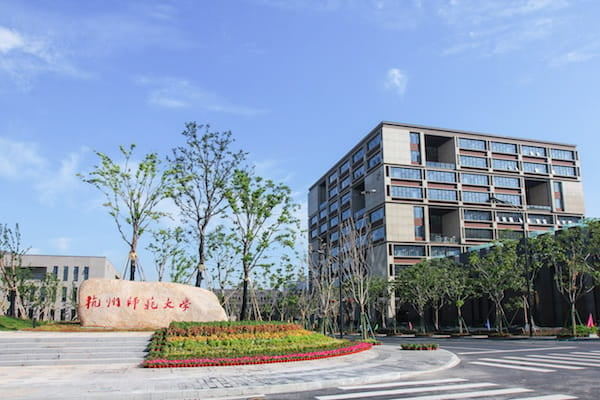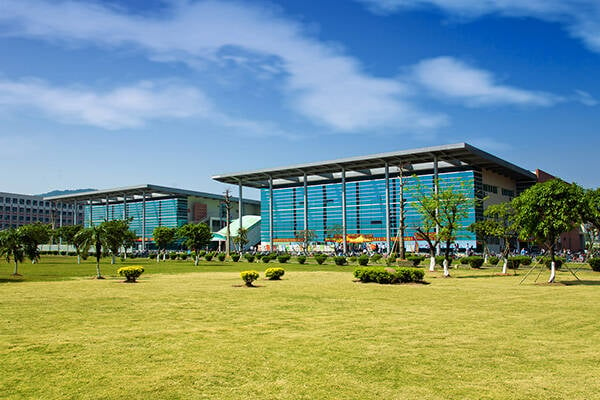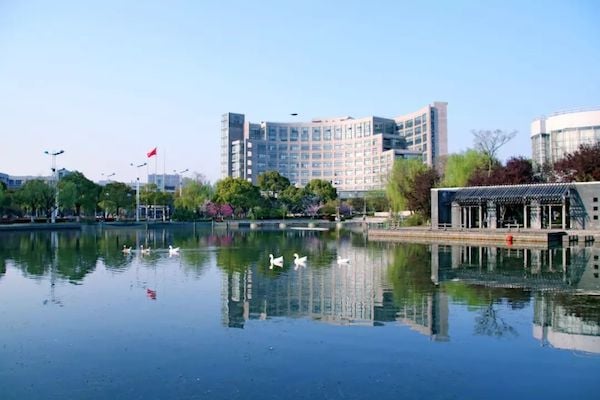 Shenzhen University
Shenzhen University
![]()
Introduction to Shenzhen University
Shenzhen University (深圳大学,website) was established in 1983 with the approval of the Ministry of Education. The Central Government, the Ministry of Education and the local government attach great importance to the construction of the SAR University. Peking University assisted in the construction of Chinese and foreign language disciplines, and Tsinghua assisted in the construction of electronic and architectural disciplines. The National People’s Congress assisted in the construction of economic and legal disciplines. A large number of well-known scholars gathered in Shenzhen University.
Campus
Shenzhen University has two campuses, Houhai and Xili, with a total campus area of 2.72 square kilometers. The school has rich teaching resources and complete scientific research facilities. The total construction area of the campus is 1.543 million square meters, and the total value of instruments and equipment is 2.7 billion yuan. The library building is 51,202 m2 (including the first phase of the Xili Campus Library). The school has more than 4.12 million paper resources; 377 kinds of databases, including 2.58 million full-text e-books and 119,000 full-text electronic journals. There is one national comprehensive undergraduate comprehensive reform pilot, one national-level talent training model innovation experimental area, and one national-level practical teaching base. There are 2 national experimental teaching demonstration centers, 1 national virtual simulation experiment teaching center, 16 provincial experimental teaching demonstration centers, and 3 provincial virtual simulation experimental teaching centers. There are 3 national engineering laboratories, 1 national engineering technology research center, 2 key laboratories of the Ministry of Education, 1 international cooperation base of the Ministry of Science and Technology, and 10 provincial key laboratories.
At the beginning of the school, the school reformed the management system of colleges and universities, and actively explored scholarships, credit systems, work-study programs, etc., and took the lead in implementing the two-way selection system for graduates in China, implementing the system of full-time appointment of faculty and staff and the social management reform of the logistics department. It caused a strong reaction in the country.
In the 36 years since its establishment, Shenzhen University has followed the SAR and is committed to reform and rapid development. The school adheres to the motto of “self-reliance, self-discipline and self-improvement” and has formed the characteristics of “University University, Window University and Experimental University”, forming a complete talent training system from bachelor, master to doctoral and multi-level scientific research and social services. The system has become a comprehensive university with complete disciplines, complete facilities, excellent teachers and standardized management. Shenzhen University is a national university student cultural quality education base and a national civilized campus. In order to realize the connotative development of higher education, the school formulated the “Shenzhen University Cultural Innovation Development Outline”, established the Rao Zongyi Cultural Research Institute and Liu Yuyi Art Institute, and built a first-class socialist special zone with Chinese characteristics with a high degree of cultural consciousness and cultural self-confidence. University culture.
Shenzhen University has 34,156 full-time students, including 27,454 full-time undergraduates, 6,388 postgraduates, 314 doctoral students, 1,707 part-time postgraduates, 21021 adult education students, and 862 international students. The school’s disciplines are complete and comprehensive, covering 11 disciplines including philosophy, literature, economics, law, education, science, engineering, management, medicine, history, and art. The school has 24 teaching colleges, two affiliated hospitals and 97 undergraduate majors. There are 5 state-level specialty programs, 14 provincial-level specialty programs, and 15 provincial-level key disciplines. There are 10 first-level disciplines under the doctoral degree, 3 post-doctoral research stations, and 1 post-doctoral workstation. There are 38 master’s degree programs authorized by master’s degree programs; there are 22 professional master’s degree programs. Engineering, Clinical Medicine, Materials Science, Biology and Biochemistry, Computer Science, and Chemistry entered the top 1% of the ESI disciplines in the world, and ranked 84th among the Chinese universities’ extended editions of ESI Highly Cited Papers. The school initiated the establishment of the “NOOC Alliance of Local Universities and Colleges”, with 130 colleges and universities, 359 courses on-line, 119 selected schools, 61 accredited schools, and over 600,000 courses. In 2018, undergraduates won 614 competition awards at various levels, including 131 international, 269 national, and 205 provincial and ministerial.
The structure of the school’s faculty is continuously optimized, and the introduction and cultivation of high-level talents are fruitful. There are 3,647 faculty members, including 2,315 full-time teachers (517 professors, 642 associate professors), 553 technicians, and 779 managers. There are 1115 postdoctoral students in our school, 464 full-time researchers and 164 visiting professors. There are 15 academicians of the Chinese Academy of Sciences and the Chinese Academy of Engineering (including 4 short-term candidates), 2 academicians of the American Academy of Medical and Biological Engineering, 4 academicians of the American Academy of Sciences, the Academy of Engineering, and the Academy of Medical Sciences (short-term), 1 academician of the Royal Academy of Engineering, and a member of the Canadian Academy of Engineering. 2 people, 1 academician of the European Academy of Sciences (short-term), 1 academician of the Singapore Academy of Sciences (short-term), 3 academicians of the Eurasian Academy of Sciences, 1 Nobel Prize (physical and medical), short-term. There are 4 chief scientists of the National “973 Program”, 27 Changjiang Scholars (including 21 short-term candidates), 32 National Science Fund for Distinguished Young Scholars (including 14 short-term employees), and 14 National Excellent Young Scientists Fund ( Including one short-term hire, the Ministry of Education “new century outstanding talents” 7 people.
The school has continuously deepened the reform of the scientific research system, and the research projects and funding have grown significantly. In 2018, the total research funding exceeded 1.1 billion yuan; 302 new natural science fund projects were added, ranking 23rd in the country and 2nd in Guangdong universities; 33 new social science fund projects were added, ranking 36th in the country. The fourth place in Guangdong universities. SCI included 3,293 papers and SSCI included 238 papers. Received 2,846 scientific research awards. 425 patents were granted, including 229 invention patents. The Journal of Science and Technology was awarded the “Top 100 Chinese Science and Technology Periodicals of Chinese Universities in 2018”; the papers of humanities and social sciences in journals ranked 13th among the national university journals.
International Cooperation
The school actively promotes “international talent training, international scientific research cooperation, international teacher construction, and international cultural exchanges”. Now it has established contacts with 256 overseas universities, and has carried out various forms of international cooperation such as student exchange, teacher training, and cooperative education. Improve the quality and level of international communication in an all-round way.
Shenzhen University will continue to be based in Shenzhen, relying on the economic and social development of Guangdong, Hong Kong and Macao Dawan District, facing the international, in the spirit of reform and innovation, to cultivate high-quality innovative and entrepreneurial talents, adhere to cultural leadership, strengthen innovation drive, achieve connotation development, and build new Strive for the high-level SAR universities that the people of the times are satisfied with.
Campus VR
Teaching Program
![]() ISAC University Teaching Program
ISAC University Teaching Program








